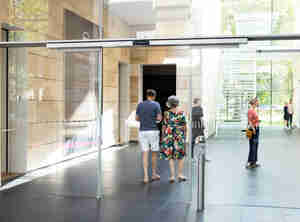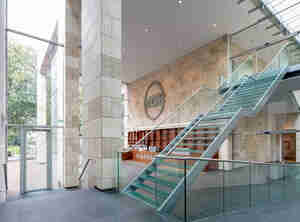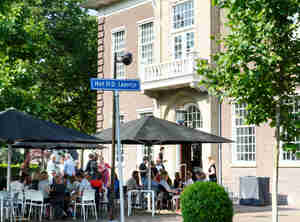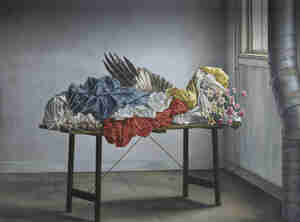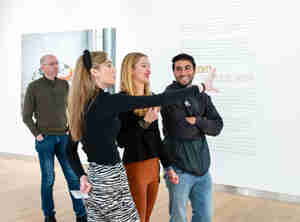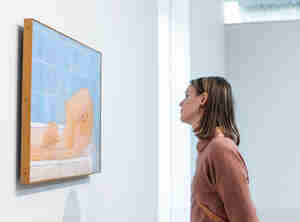- Plan your visit
- See and do
- Collection
- About us

Go back
Raoul Hynckes
La bête noire, preliminary study, 1940
Raoul Hynckes (1893-1973) considered painting to be a craft and felt closely aligned to the Old Masters in this respect. Whether he used the same symbolism as his 17th-century predecessors remains unclear; he never commented on it. Nevertheless, it seems very likely that in this work Hynckes alluded
...
to the crucifixion and resurrection of Christ.
The three skulls in an open cabinet may be a biblical reference to Christ and the two thieves crucified alongside him on Golgotha. A kind of circle is visible on the upper left skull (without the mandible): Christ’s halo? The partitions of the cabinet form a cross. The attributes at the lower right (a pair of pliers and a hammer) are two of the so-called instruments of the Passion. The ivy is a symbol of immortality and could denote Christ’s resurrection.
Hynckes reinforced the symbolism in the final painting by adding a key (the attribute of Peter) and a black beetle (‘la bête noire,’ which can mean both the black sheep and a thorn in the flesh). This reading may sound far-fetched, but veiled references to Christianity are also found in other works by Hynckes.
Text: Myrthe Wesseling, guide and museum host
Artist
Raoul Hynckes
Title
La bête noire, preliminary study
Year
1940
Technique
Mixed media on paper
Size
65 x 95 cm (h x w)
Type of object
Drawing
Copyright
Uknown
Copyright unknown. We have tried to trace the copyright holders. If you believe you have the copyright, please contact us.
